

Helmets are essential gear for ensuring safety while engaging in activities like cycling, motorcycling, and other extreme sports. But when you first buy a helmet, you might wonder: do helmets fit better over time? This question often arises because many people experience slight discomfort when wearing a new helmet. The good news is that helmets do, in fact, adjust to some extent with time. However, understanding how this happens and whether it’s ideal for your safety is important. In this article, we’ll explore the dynamics of helmet fit, what changes over time, and how to ensure your helmet fits perfectly.
Understanding Helmet Fit: The Basics
Before delving into whether helmets fit better over time, it’s crucial to understand what constitutes a proper helmet fit. A helmet should snugly hug the shape of your head without feeling too tight. It should stay securely in place while you move, but not cause discomfort or pressure points. The fit of a helmet is affected by various factors, including its size, shape, padding, and the materials used in its construction.
The Role of Foam Padding in Fit
Foam padding is a key element that affects helmet comfort. Most helmets use a combination of EPS (expanded polystyrene) foam and softer interior padding. The foam serves to absorb impact during an accident, but it also plays a role in adjusting the fit. As you wear a helmet, the foam conforms slightly to the shape of your head, making the helmet feel more comfortable over time. This process is often referred to as "breaking in" the helmet.
Adjustable Straps and Fit Systems
In addition to foam padding, helmets often come with adjustable straps and fit systems that help tailor the fit to your head. Many modern helmets use a dial-fit system or an internal adjustable harness to ensure a snug, customized fit. Over time, these systems may also loosen slightly, offering more comfort, but the straps and harnesses typically don’t change dramatically in fit.
Why Do Helmets Feel Tight at First?
It’s common for a new helmet to feel a bit tight initially. This sensation arises due to the structure and materials of the helmet, which haven’t conformed to your head yet. The foam padding, which is designed to provide protection, may feel stiff or too snug when new. However, it’s essential that the helmet fits firmly enough to stay in place during an impact—if it feels too loose initially, it might not be safe.
Material Compression Over Time
As you wear the helmet, the foam padding begins to compress slightly, adapting to the shape of your head. This process may make the helmet feel more comfortable, but it's important to note that the fit should not become loose or overly comfortable. A helmet that feels too loose after extended use could indicate that the foam has lost its protective capability, which compromises your safety.
Does a Helmet Fit Better Over Time?
Yes, a helmet can fit better over time, but there are important caveats to consider. The foam padding inside the helmet will compress and conform to the contours of your head after consistent use. This break-in period helps the helmet feel more comfortable without altering its protective capabilities. However, this doesn’t mean that the helmet will drastically change its fit to the point of becoming too loose.
How Long Does It Take for a Helmet to Break In?
The break-in period varies depending on the helmet’s material and construction. Typically, it takes a few weeks or a couple of months of regular use for a helmet to fully break in. After this period, the helmet should feel more comfortable without losing its effectiveness.
When Does a Helmet Stop Breaking In?
At some point, the helmet will stop changing. The foam padding has a limited amount of compression it can undergo before it reaches its maximum comfort level. This is why it's important to get the fit right from the start—if the helmet feels too tight when you first try it on, it might not be a good choice for you.
Why a Good Fit Is Crucial from the Start
Even though helmets do get more comfortable over time, it’s still essential to ensure that you start with the right size. If you buy a helmet that is too small or too large, the break-in period might not solve the problem, and you could end up with a helmet that doesn’t provide adequate protection. A helmet that’s too tight might cause pain, while one that’s too loose may not stay in place during an accident.
Are Helmets That Are Too Tight Dangerous?
While a helmet that feels too tight at first might break in and become more comfortable, it’s crucial that it doesn't cause pain or pressure points. Pain could indicate that the helmet is improperly sized, and this could lead to discomfort during extended use. Helmets that cause constant pain or headaches are a safety concern and should not be worn.
Checking for Proper Fit
To ensure that your helmet is safe and comfortable, check the following:
Snugness: The helmet should fit snugly around your head without excessive pressure.
Movement: It shouldn’t slide around when you move your head.
Chin Strap: The chin strap should fit comfortably under your chin, keeping the helmet securely in place.
Eyewear Compatibility: Ensure that your helmet doesn’t interfere with glasses or goggles.
If you notice discomfort or a loose fit, consider adjusting the fit or replacing the helmet.
How to Improve the Fit of Your Helmet Over Time
If you find that your helmet is a bit uncomfortable, there are a few steps you can take to improve its fit over time. Here are some strategies:
Break It In Gradually: Wear your helmet for short periods initially to allow the foam to compress gradually. Don’t force it to fit too quickly, as this could affect the padding.
Use Different Padding: Some helmets allow you to replace or adjust the internal padding. If you’re having trouble with the fit, you can experiment with thicker or thinner pads to improve comfort.
Adjust the Fit System: Many helmets come with adjustable fit systems, including dials and straps. Fine-tuning these can make the helmet feel more comfortable over time.
Should You Replace Your Helmet After a Few Years?
Helmets don’t last forever, even if they feel more comfortable with time. After a few years, the foam padding inside the helmet can degrade, losing its ability to absorb impact effectively. It’s generally recommended to replace your helmet every 3-5 years or after any significant impact.
Why Replacement is Necessary
Replacing your helmet ensures that you have the latest safety technology and that the materials haven’t degraded. Although the fit may improve over time, an old helmet can’t offer the same level of protection as a new one, even if it feels more comfortable.
Conclusion
In conclusion, helmets do fit better over time, thanks to the gradual compression and adaptation of the foam padding. This break-in process can make your helmet feel more comfortable, but it's essential to start with the right size and fit to ensure maximum safety. Always check your helmet’s fit periodically and remember that the helmet's primary purpose is protection. A helmet that feels too loose after significant use should be replaced to maintain its protective qualities. By following these tips, you can enjoy a safe, comfortable, and reliable helmet for years to come.